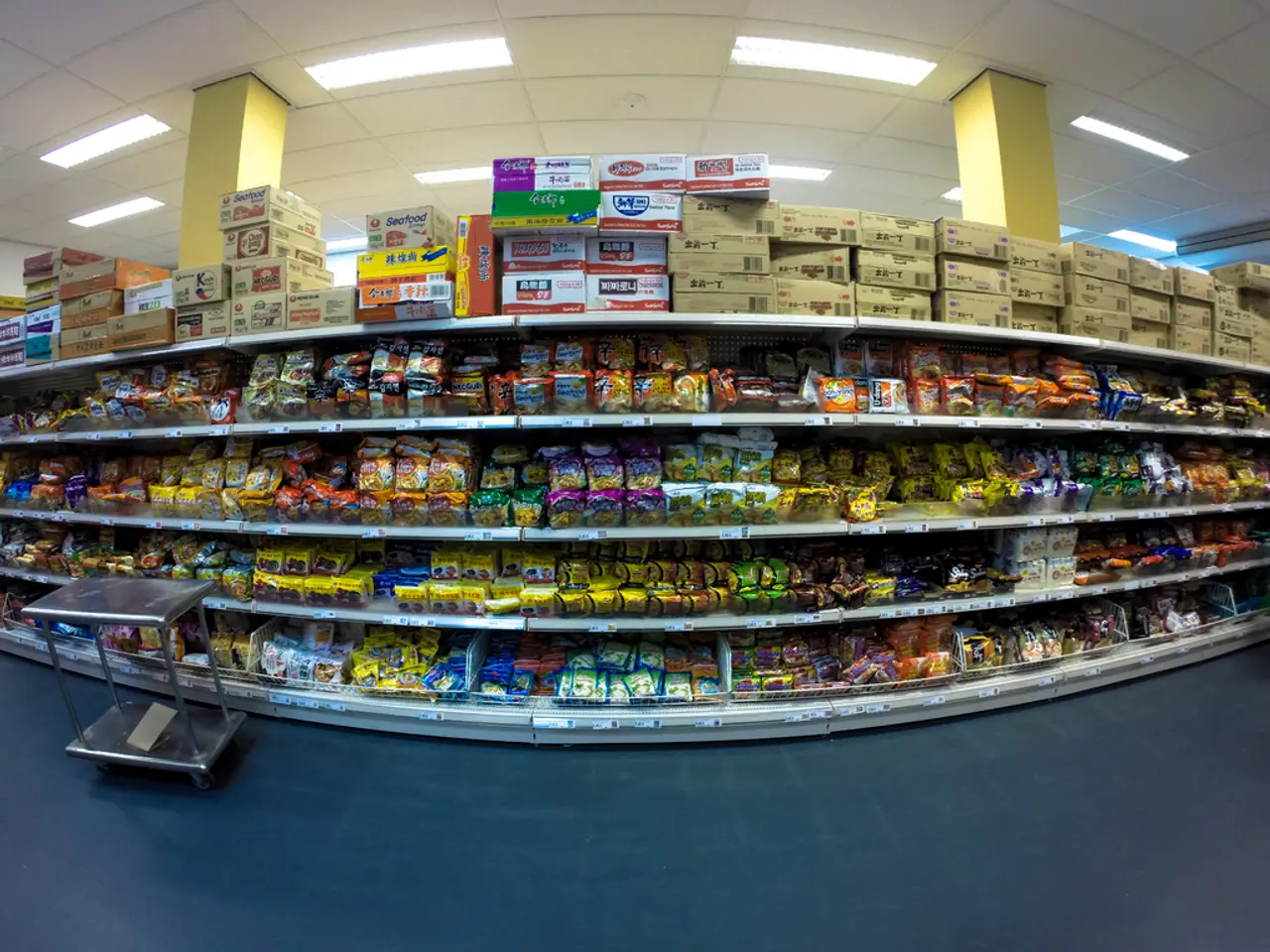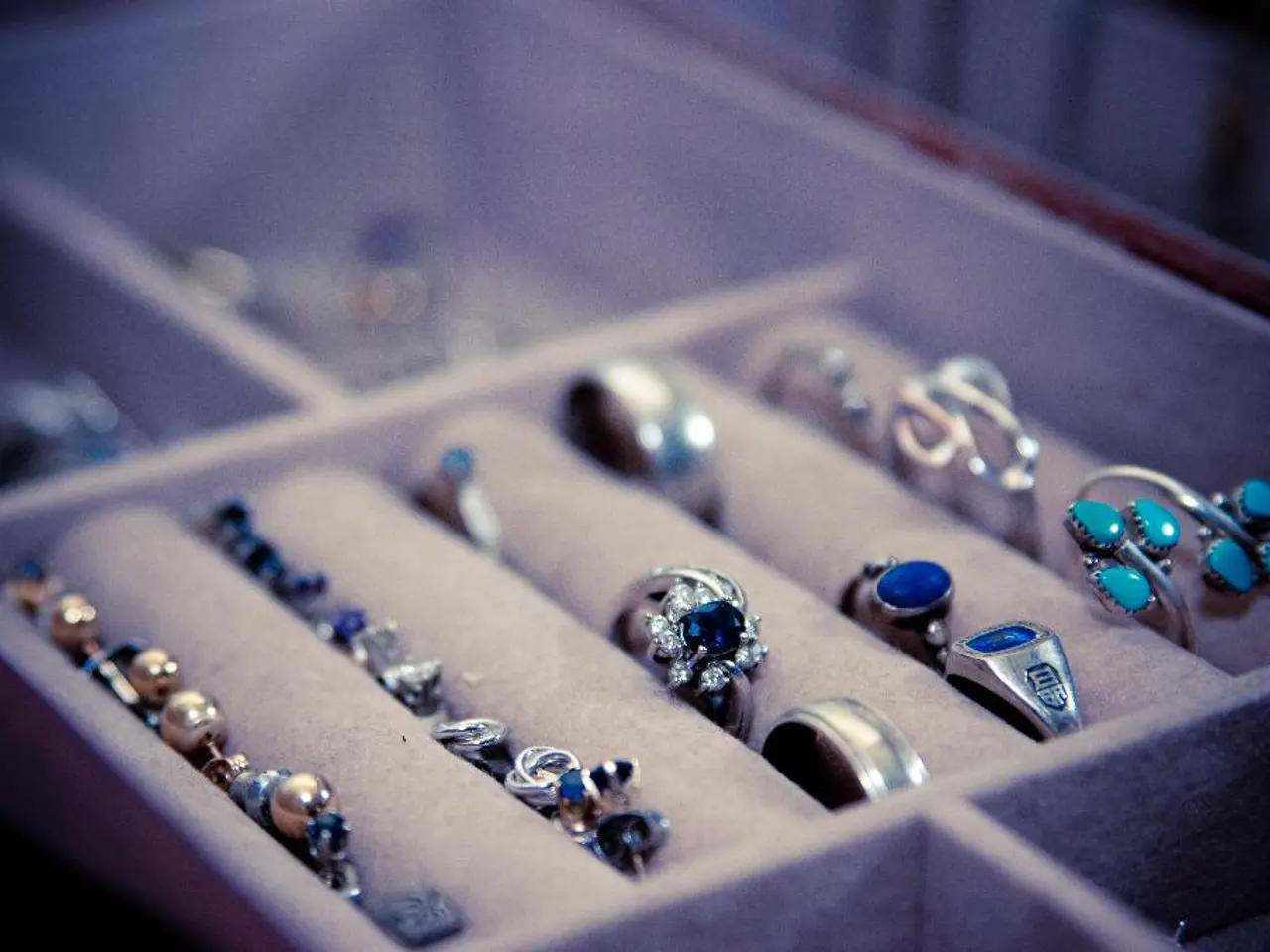Grocery stores engineered to mimic casinos, exploiting shoppers' habits and impulses
Supermarkets and Casinos Use Psychology to Boost Sales and Extend Visits
In the world of retail, the art of persuasion has taken a new twist. Supermarkets and casinos are strategically applying consumer psychology to influence behavior, prolong visits, and increase spending.
In Supermarkets
The layout and product placement in supermarkets are designed with a purpose. Essential items like milk and bread are often placed at the back, forcing shoppers to traverse aisles of other items, exposing them to more products and encouraging impulse buys.
Emotional triggers and perception play a significant role in purchases. Packaging, branding, and shelf placement evoke feelings such as nostalgia or aspiration that influence buying decisions subconsciously. Around 95% of decisions occur subconsciously, rooted in emotional connections.
Cognitive biases like anchoring and scarcity are also employed. For instance, Target's "Dollar Spot" near the entrance leverages perceived scarcity to boost impulse buys.
Store fixtures, colours, and lighting are used to evoke emotional responses and guide behaviour. Warm colours like red and orange create urgency, bright lighting draws attention to key products, and mirrors slow shopper movement encouraging longer browsing and interaction.
Traffic flow strategies such as the "Power Wall" and decompression zones are also used to highlight high-margin and impulse items, and let customers adjust before engaging deeply.
In Casinos
While the focus on physical casino design may be less, casinos also use similar psychological mechanisms. Environments devoid of clocks and windows distort time perception, lighting and sounds stimulate dopamine release, and gamification elements create excitement and prolonged engagement.
Emotional manipulation is key. Casinos and related gambling platforms use dopamine triggers such as bells, countdown timers, and slot animations to mimic gambling's addictive reward cycles, keeping players engaged longer and encouraging repeated behaviour.
Unlike supermarkets, casinos typically avoid reminders like receipts that would reinforce losses, thereby delaying negative emotions and encouraging continued gambling despite losses.
A Shift in Focus
Casinos are facing a shift in clientele, with a new focus on millennials, who already visit casinos on a regular basis. To appeal to this demographic, designers are incorporating more tech-friendly elements like Wi-Fi and charging stations, re-positioning layouts to be more social-friendly, and offering entertainment options like shows and lounges integrated into the casino floor.
Modern casino design also includes high ceilings, natural sunlight, elaborate artwork, and ornate decorative clocks to make gamblers feel fresh and in a mood to stay and play longer. Higher-priced brand names are situated just at eye-level in grocery aisles, while cheaper off-brands are harder to see.
Together, these tactics manipulate perception, emotion, and cognitive biases through strategic design to increase customer dwell time, encourage impulse actions, and maximize both shopping and gambling revenues. This detailed psychological approach ensures customers spend more time and money, often being unaware of these subtle influences embedded in their environment.
[1] Consumer Psychology in Retail: A Comprehensive Guide
[2] How Casinos Use Psychology to Make You Spend More Money
[3] The Psychology of Retail: How Stores Manipulate Your Brain
- The blog titled "The Psychology of Retail: How Stores Manipulate Your Brain" explores how supermarkets, like casinos, use consumer psychology to influence behavior, prolong visits, and increase spending.
- As casinos shift their focus to attract millennials, they are incorporating tech-friendly elements, redesigning layouts for social interaction, and offering entertainment options, similar to elements found in lifestyle blogs like 'home-and-garden' and 'shopping'.
- While reading "How Casinos Use Psychology to Make You Spend More Money", one can discover that gambling establishments, like in home-and-garden or casino-and-gambling websites, strategically apply consumer psychology to manipulate perception, emotion, and cognitive biases, leading customers to spend more time and money.




